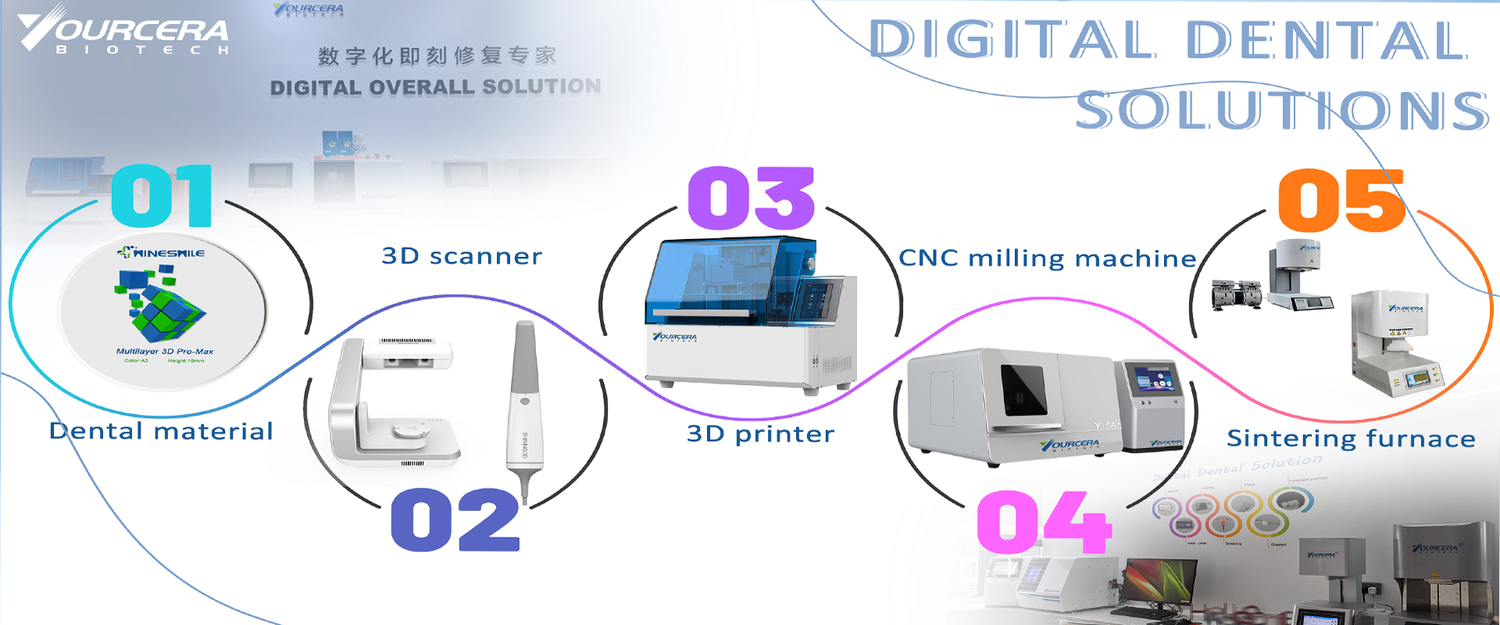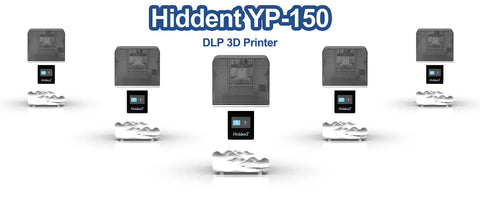How to select dental 3d printer? Categories of 3D printers and advantages and disadvantages
The dental industry is one of the industries that is rapidly adopting additive manufacturing to create custom devices that fit each patient. From 3D scans or medical imaging data, dental professionals can obtain accurate stl 3D models and print custom parts such as dental molds, braces, crowns or implant guides. 3D printing is revolutionizing the digital dental industry. But what types of dental 3D printers are currently on the market?

Procedures that used to take weeks now take hours to produce chair-side dental models and procedure guides, giving local dentists complete control over patient-specific products. The ability to generate apps from digital files (including night guards, temporary crowns and dentures) means fewer appointments are needed, turnaround times are faster and costs are greatly reduced, resulting in improved patient care across the board.
Let's take a look at the growing number of solutions that can bring your practice or lab into the digital dental age

Which solutions should you choose? We looked at some of the machines available for this field, with a particular focus on resin 3D printers. This is because these are usually the most popular types of printers in dentistry, as the light-curing process allows for very detailed and precise parts that meet the requirements of the market. See our list of dental 3D printers, sorted alphabetically (by manufacturer name).
What types of dental 3D printers are currently available on the market? Which solutions should you choose?
The most common type of 3D printer on the market today is the light-curing resin 3D printer. It is also the most popular type of printer in dentistry, as the light-curing process allows for very detailed and precise parts that meet the requirements of the market. And the professional medical special resin can fully meet the medical standard。In addition, the resin printer is simple to operate, fast printing speed, mature and stable technology, so it is accepted by this dental industry
 What types of resin printers are there?
What types of resin printers are there?
Resin printers, also known as light-curing resin printers, are made by curing the resin in layers with a special light source and printing the finished product we need after superimposition.
There are three common types of resin printers on the market, SLA, LCD and DLP, each of which has its own characteristics and advantages, let me elaborate below. 
SLA 3D Printer
SLA 3D printing, or stereolithography 3D printing, is the most common resin 3D printing process and is hugely popular for its ability to produce highly accurate, isotropic, leak-free prototypes and end-use parts with fine features and smooth surface finishes. Advantages. 1. High printing accuracy 2. Inexpensive machine 3. Simple structure 4. Uses 405nm universal resin Disadvantages 1. Slow printing speed 2. Low success rate for printing complex models 3. Narrow printing application range 4. High printing cost Conclusion, not suitable for use with dentistry. 
LCD 3D Printer
LCD 3D printer is also known as a triode LCD panel projector printer, the light source is through the beam splitter respectively through the RGB triode, AD conversion signal source, modulation and cast to the LCD screen panel, through the control of the LCD panel to achieve control of the light, RGB light through the projection lens projected onto the LCD screen to form a color image, and then the resin for layered curing, so as to achieve the printing effect.
Advantages.
1, high printing accuracy: very easy to achieve a plane precision of 100 microns, comparable to DLP technology
2, compared to SLA and DLP, the cost performance is extremely outstanding.
3, simple structure, easy to assemble and overhaul
4, common resin, the choice of 405nm backlight, most of the light-curing resin is theoretically compatible. But some SLA special resin, compatibility is not good, the main fear of exposure is not enough.
5. Fast printing speed, faster than SLA technology, but the speed is not as fast as DLP technology
Disadvantages.
1. less selective for LCD, the key component LCD needs to have a good selective transmission of 405 light
2. Print size is small
3. LCD screen is easy to wear out and needs to be replaced frequently However, the mainstream technology of LCD printers in the market is to use matrix light source, using UV lamps arranged neatly, which will result in uneven illumination, and the situation that tiny details cannot be printed.
Yourcera has improved the LCD light source, We have developed Y-2P 3D printer with integral light source, which solves the problem of uneven illumination, and the printing effect is infinitely close to that of DLP light source printer, and received good comments from customers 

After a pair of uncomparable experiments, it was found that the integral light source LCD3d printer developed by yourcera solved the problem that traditional LCD printers could not print on details, and improved the printing effect of LCD printers by a level, and the printing effect has been infinitely close to that of DLP 3D printers.
DLP 3D Printer
Advantages.
1, DLP 3D printer life is long, DLP optical life is 10 times longer than the LCD screen 2, DLP 3D printer molding block, high success rate of printing 3, DLP 3D printer printing speed block, 3-4 times that of LCD 3D printer Disadvantages 1, the high cost of construction. 2, processing size is small, mainly used for printing small volume items.
Yourcera also responds to the market demand, through the unremitting efforts of technical staff, developed a cost-effective DLP 3D printer YP-150, using 405nm open DLP optical machine, compatible with 98% of the resin on the market, print resolution up to 1080P, print size up to 81mm * 144mm * 100mm, but the price is only 1/3-1/4 of other brands of DLP 3D printers, effectively solving the problem of high prices of DLP 3D printers can not be used universally.


